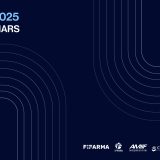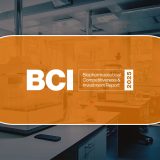WAIT Indicator: responsible pragmatism in measuring access to new technologies in Latin America
WAIT Indicator: responsible pragmatism in measuring access to new technologies in Latin America
By Diego Antonio Restrepo Miranda
General Manager of InValue Health Solutions, a consulting and support company for health management, for different countries in Latin America.
Improving patient access to healthcare services is one of the greatest challenges facing Latin American countries. The availability of human talent in health, the scarcity of physical infrastructure in rural and dispersed settings, the absence of care models that recognize the diversity of contexts, and the availability of resources -which are always limited- are some of the factors that explain the difficulty in achieving this goal. On the other hand, the absence of trust between the different actors - marked by a long history that gives reason to one or the other - and incipient processes for making decisions in health, prevents permanent progress from being made. Achieving a balance between the health needs of the population and the available resources becomes the urgent framework on which to build trust as the driving force for a much more robust and technically supported decision-making process.
The "Waiting to Access Innovative Therapies" (WAIT-Indicator) is an indicator that seeks to provide an approximation of the availability and time it takes a patient to access innovative drugs in a healthcare system, which has been a benchmark in Europe since the early 2000s. Fifarma recently led the development of an exercise based on this indicator, through a survey made to some associations, pharmaceutical industry companies, and market experts in eight Latin American countries. The exercise was framed around 185 innovative drugs for oncology and orphan diseases, approved by global reference regulatory agencies -FDA and EMA- between 2014 and 2020. The results of this survey present information that can be useful for different stakeholders in the healthcare systems.
Firstly, it reflects one of the great challenges facing healthcare systems: the availability of actionable information; in this case, on one of the main concerns of decision-makers: the pressure of technological innovation. This first result considerably limits the analysis of the factors that may have an impact on access to innovative technologies in some countries of the region. Countries such as Argentina, Ecuador, Chile, and Costa Rica presented limited information, so the results "may not be representative". Colombia, Mexico, Brazil, and Peru provide an idea of access to new technologies.
Second, it was observed that nearly 55% of the drugs analyzed are available in at least one of the eight countries analyzed. Colombia, Mexico, and Brazil top this list with 46, 42 and 22 drugs available to patients, respectively. In other words, coverage in these three countries is between 22% and 46% of the availability of these drugs in Latin America. It should be noted that the above does not mean full availability for patients, given the specific characteristics of coverage and financing in each country.
Finally, one of the results that in my opinion was most illustrative is related to the average time it takes for a drug to become available to patients. Once the drug is approved by the FDA, it takes 3.7 years for it to become available as a therapeutic option. Then, from the moment the local regulatory agency approves it, an average of 1.5 years elapse before it can be used in the treatments demanded by patients.
Although the results have limitations associated with the information available in the countries, it is an approximation that allows us, in a concrete way, to come closer to understanding patient access to technological innovation and invites us to reflect on possible needs for further analysis of the factors that influence these results. For example, the need to strengthen regulatory agencies at the local level, the role of technical teams in preparing healthcare systems for technological innovation (through horizon scanning processes, for example), the elements that motivate the pharmaceutical industry to bring innovation to the region, and particularly, the political, economic and international aspects that must be considered in order to face technological pressure through structured decision-making processes based on the best available evidence, within a framework where technologies are affordable.


